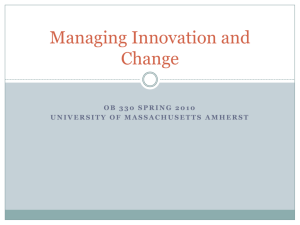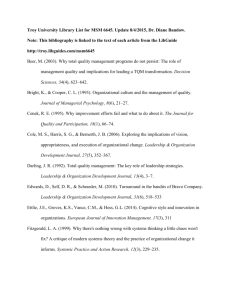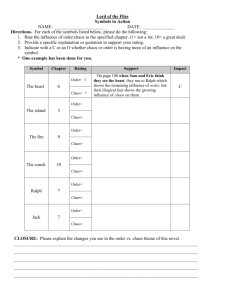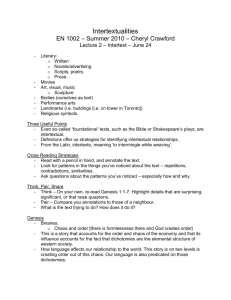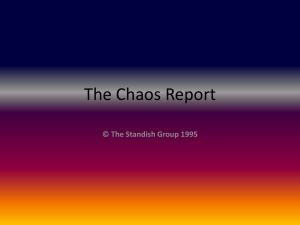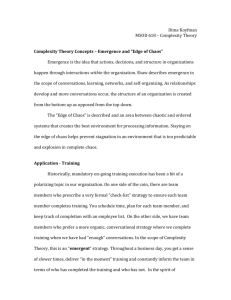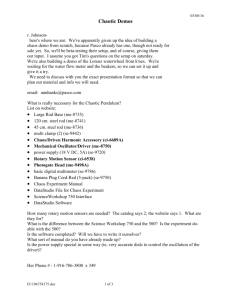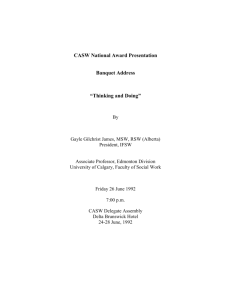Your Quest for a Universal Truth
advertisement
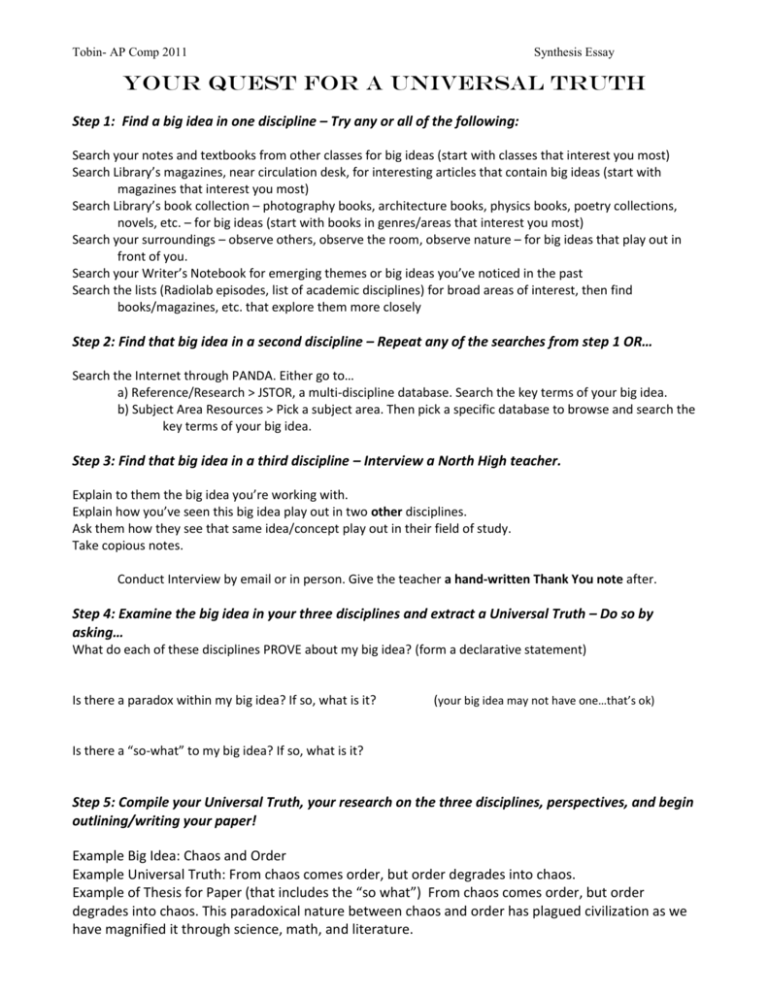
Tobin- AP Comp 2011 Synthesis Essay Your Quest for a Universal Truth Step 1: Find a big idea in one discipline – Try any or all of the following: Search your notes and textbooks from other classes for big ideas (start with classes that interest you most) Search Library’s magazines, near circulation desk, for interesting articles that contain big ideas (start with magazines that interest you most) Search Library’s book collection – photography books, architecture books, physics books, poetry collections, novels, etc. – for big ideas (start with books in genres/areas that interest you most) Search your surroundings – observe others, observe the room, observe nature – for big ideas that play out in front of you. Search your Writer’s Notebook for emerging themes or big ideas you’ve noticed in the past Search the lists (Radiolab episodes, list of academic disciplines) for broad areas of interest, then find books/magazines, etc. that explore them more closely Step 2: Find that big idea in a second discipline – Repeat any of the searches from step 1 OR… Search the Internet through PANDA. Either go to… a) Reference/Research > JSTOR, a multi-discipline database. Search the key terms of your big idea. b) Subject Area Resources > Pick a subject area. Then pick a specific database to browse and search the key terms of your big idea. Step 3: Find that big idea in a third discipline – Interview a North High teacher. Explain to them the big idea you’re working with. Explain how you’ve seen this big idea play out in two other disciplines. Ask them how they see that same idea/concept play out in their field of study. Take copious notes. Conduct Interview by email or in person. Give the teacher a hand-written Thank You note after. Step 4: Examine the big idea in your three disciplines and extract a Universal Truth – Do so by asking… What do each of these disciplines PROVE about my big idea? (form a declarative statement) Is there a paradox within my big idea? If so, what is it? (your big idea may not have one…that’s ok) Is there a “so-what” to my big idea? If so, what is it? Step 5: Compile your Universal Truth, your research on the three disciplines, perspectives, and begin outlining/writing your paper! Example Big Idea: Chaos and Order Example Universal Truth: From chaos comes order, but order degrades into chaos. Example of Thesis for Paper (that includes the “so what”) From chaos comes order, but order degrades into chaos. This paradoxical nature between chaos and order has plagued civilization as we have magnified it through science, math, and literature. Tobin- AP Comp 2011 List of Radio Lab Episode Topics to Consider Conscience: Our Inner Voice Lost and Found: Our Sense of direction and place Labels, Names, and Diagnoses Altruism: Selfless acts Cities: How we behave in mass groups Time Words Oops: Mistakes Deception Famous Tumors Parasites Limits: Testing the edge of what is possible Lucy: The evolution of man The Placebo Effect Numbers New Normal? Adaption The Animal Mind: What defines consciousness and intelligence? The After Life Mortality The connection between brain and body Race Sperm and Eggs: The start of life Choice The power of Mass Media Pop-music Laughter (So-called) Life: Engineering life The human desire to Fly Human Contact Chaos and Order Musical Language Love and the Brain: The science of love Emergence: What happens when there is no leader? Morality Fighting Time Memory and Forgetting Zoos: Our desire to build a better cage Sleep Who am I? The illusion of the “self” Stress Synthesis Essay

